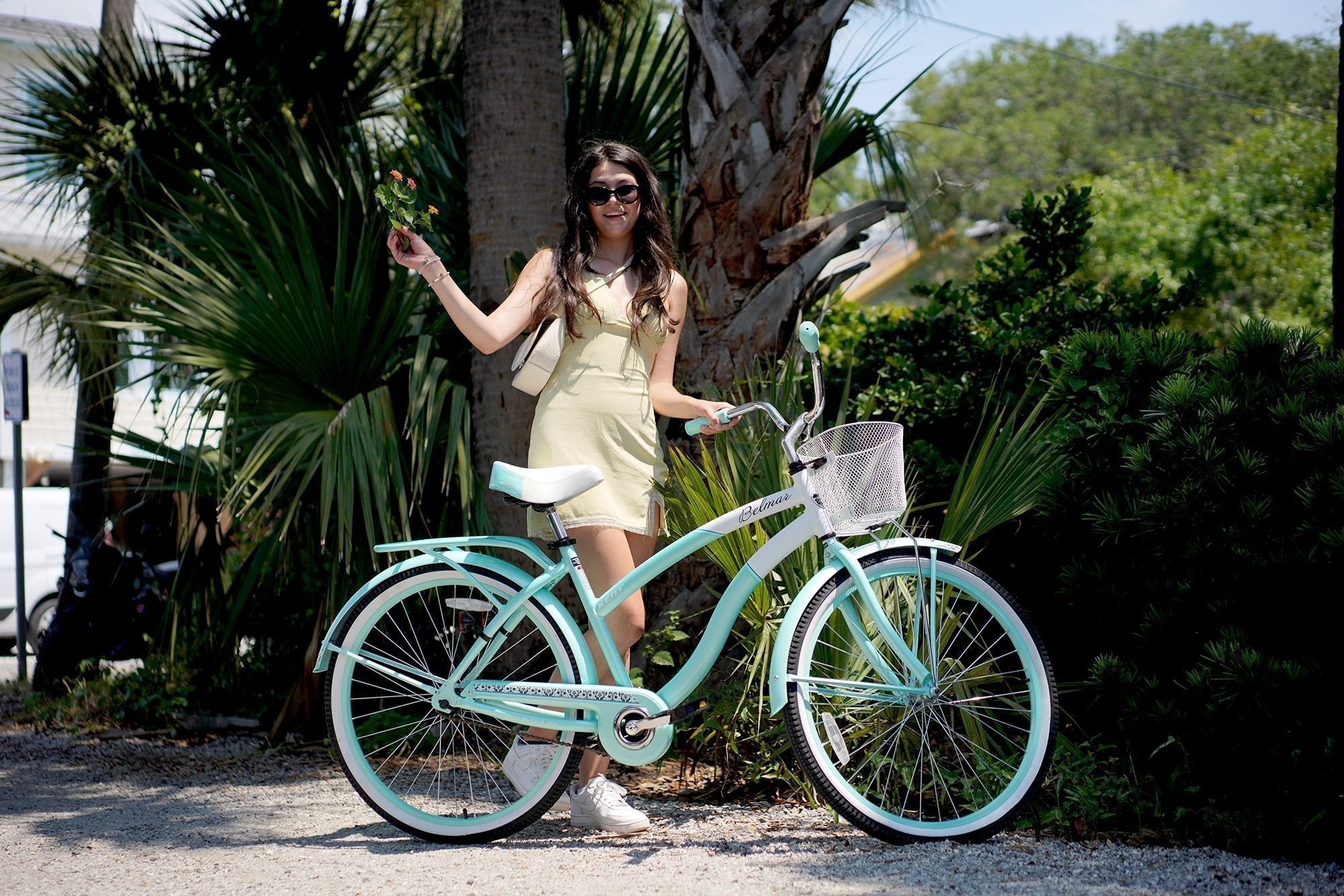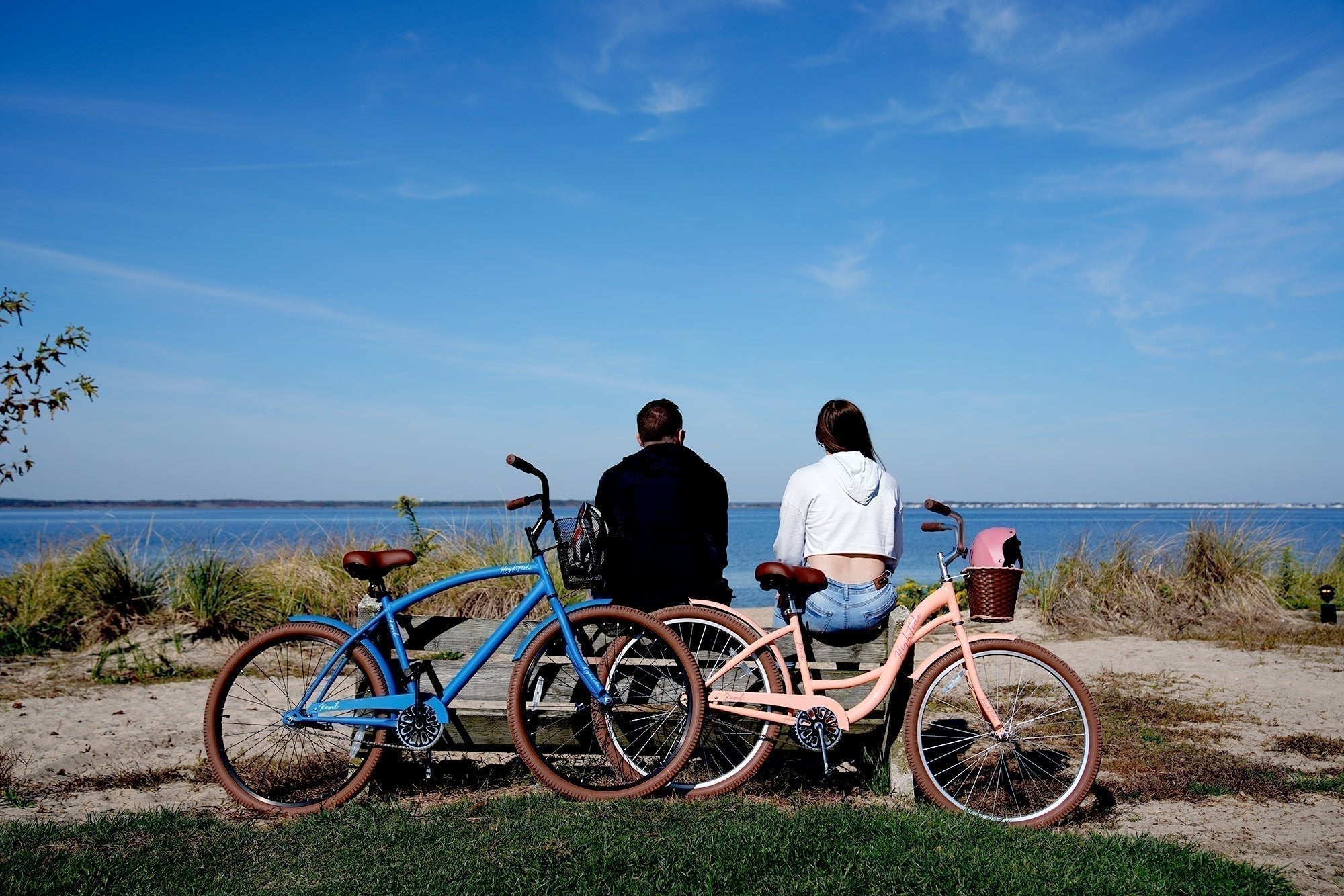Whether you're a seasoned cyclist, just starting, or finding a bicycle for your child, finding the perfect bike size is essential for a comfortable and enjoyable riding experience. With so many factors to consider, from your height and inseam length to your riding style and preferences, navigating the world of bike sizing can be overwhelming. In this blog, we'll dive into everything you need to know about finding the perfect bike size, from bike sizing to tips and tricks for ensuring a perfect fit.
1. Consider Your Inseam, Tire Size, & Height

Bike Pictured: 700c Kent Eastport
Figuring out your inseam, the correct tire size, and height are crucial steps in finding the perfect bike size. To measure your inseam, stand with your feet shoulder-width apart and measure the distance from the floor to your crotch. This measurement will help you determine the appropriate frame size for your bike. For example, a 5'5" person would be comfortable on a 26" bicycle.
2. Flat Feet

Bike Pictured: 700c Kent Eastport
Having your feet flat on the ground when sitting on a bike can be a helpful indicator of whether you have the correct bike size. When sitting on the bike of proper sizing, you should be able to touch the ground with your foot flat while having a straight leg. Also, touching the ground with the ball of your foot shows your sizing is correct. If your feet cannot touch the ground, or you're on your tippy toes, the bike may be too tall for you, leading to difficulty controlling the bike or instability. On the other hand, if your feet can easily touch the ground and your leg is bending, the bike may be too small for you and could cause discomfort and a cramped riding position. It's important to note that this is just one factor to consider when finding the perfect bike size, as your height and inseam are the most important to remember.
3. Saddle Height

Bike Pictured: 700c Kent Eastport
Saddle height is a crucial factor in finding the perfect bike size. The saddle height affects your riding comfort and efficiency, and power output. To find the correct saddle height, sit on the bike with one foot on the pedal (almost towards the top). Your leg should be almost fully extended, with a slight bend at the knee, or if you want to get technical, it should be at a 30° angle. If your leg is too bent or straight, you may need to adjust the saddle height up or down accordingly. A saddle that is too high can cause discomfort in your hips and knees, while a saddle that is too low can cause strain in your quadriceps and hamstrings.
4. Assess Your Bike Weight

Bike Pictured: 700c Kent Eastport
Assessing the weight of your bike is an important consideration as a bike that is too heavy can be difficult to control and cause fatigue while riding. Generally, an adult bike should ideally be 20% of your body weight, while a child's bike should be no more than 40% of their weight. For example, if you weigh 150 pounds, your bike should ideally weigh no more than 30 pounds. However, it's important to note that this is just a guideline, and other factors, such as your riding style and the type of bike you are using, can also impact the ideal weight.
5. The Right Frame

Bike Pictured: 700c Kent Eastport
When finding the perfect bike size, selecting the right frame is crucial. One important consideration is the clearance between your crotch and the top tube of the bike frame, which should ideally be 1 to 2 inches to ensure a comfortable and safe riding position. However, if you have the budget, investing in a q-factor can also make a big difference in your riding comfort. The q-factor refers to the distance between the pedals on a bike. A wider q-factor can provide more stability and comfort for riders, especially those with wider hips or those who experience knee pain. By getting a q-factor that suits your body type and riding style, you can enjoy a more comfortable and efficient riding experience with less strain and fatigue.
Ready to Find the Right Size?
Choosing the right bike size is essential for a comfortable, safe, and enjoyable ride. Considering factors like height, inseam, and frame geometry, you can find the perfect fit to enhance your cycling experience. An appropriately sized bike improves control and efficiency and helps prevent discomfort and injury.
Ready to find the ideal bike for your next adventure? Explore a wide selection of bikes at Kent Bicycles and ride with confidence!
Have any questions? Contact us via LiveChat, email us at service@kent.bike, or call us at (973) 434 - 8181



